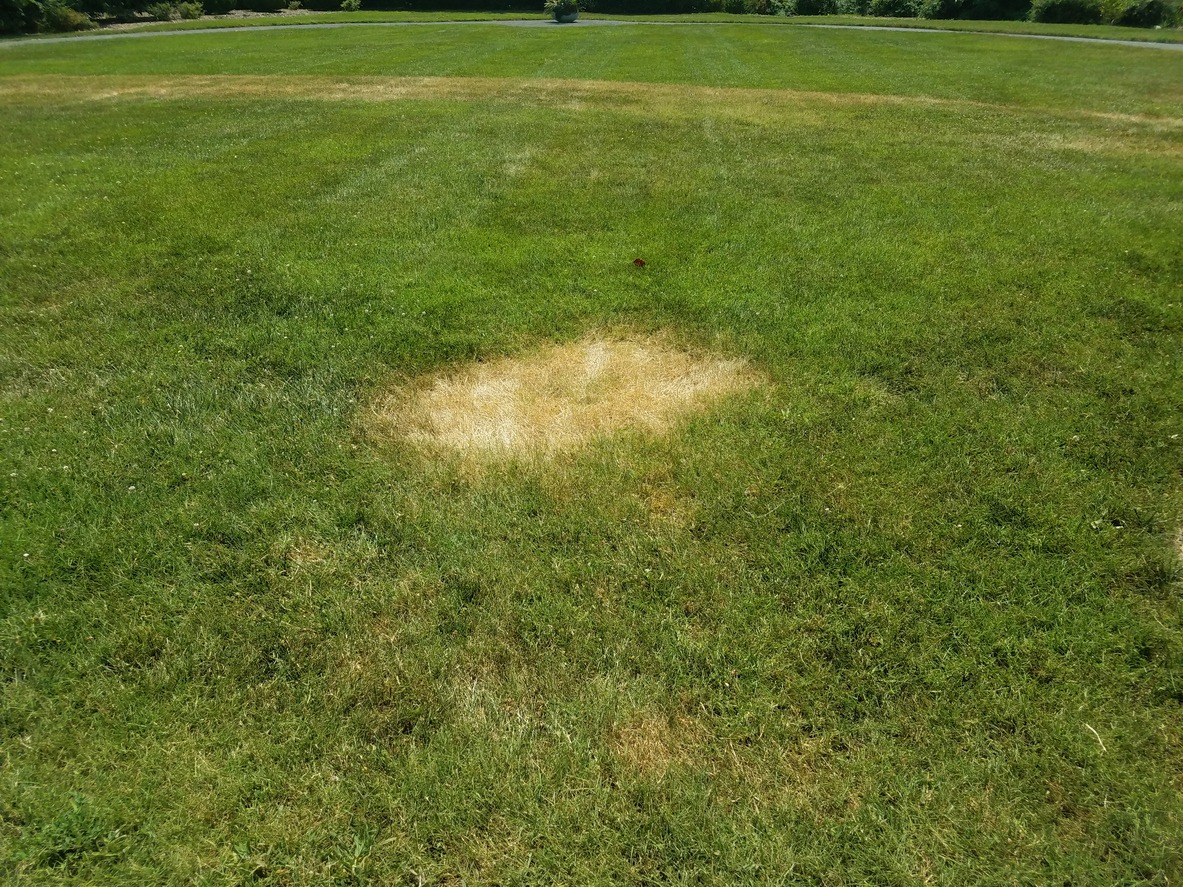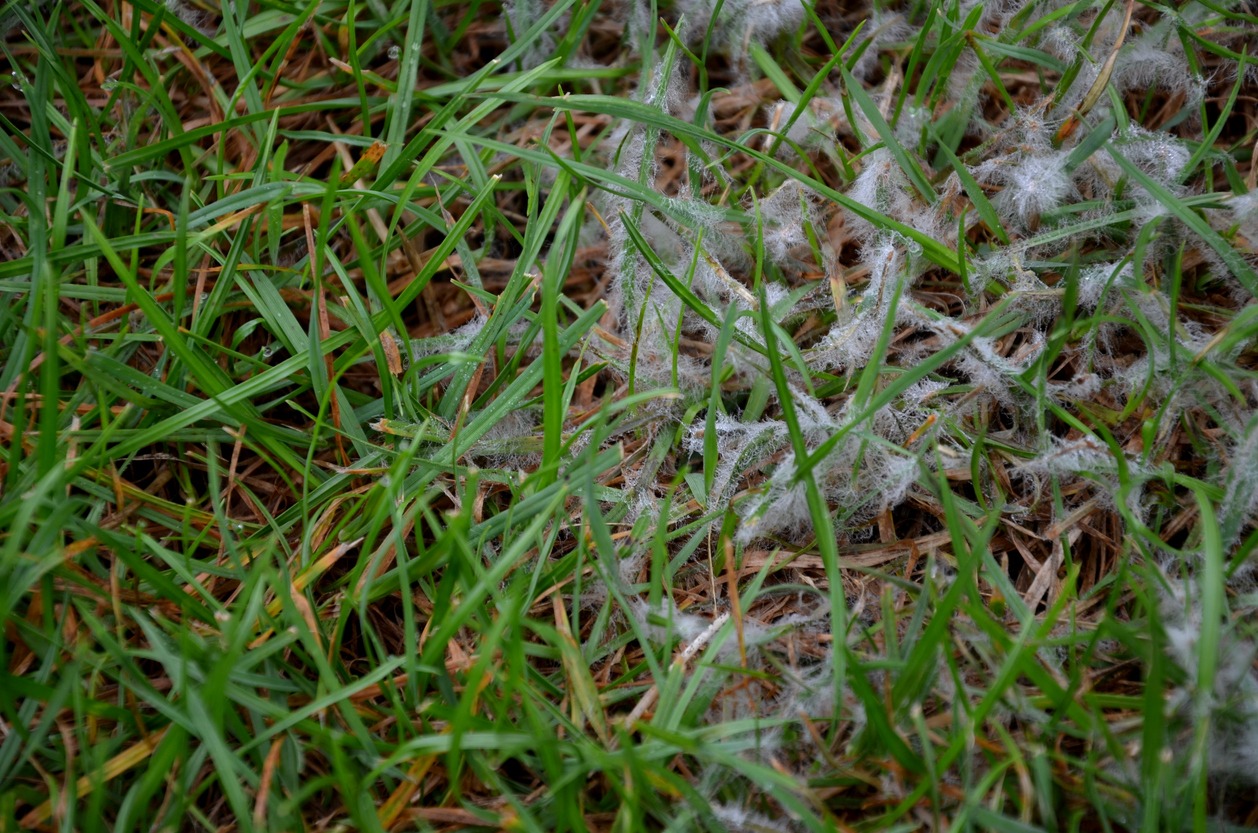Omaha Lawn Diseases 101: How to Spot, Prevent, & Fix Brown Patch, Summer Patch & Snow Mold

Omaha homeowners often experience puzzling lawn issues like strange circles, straw-colored patches, or matted turf, even with consistent watering and fertilizing. They frequently misunderstand these blemishes, attributing them to drought or traffic damage, which leads to wasted effort and money on ineffective treatments. The real cause is often lawn diseases that thrive in our local climate, made worse by common lawn care mistakes like overwatering or improper fertilization, which can actually encourage fungal growth. The frustration grows as yards fail to recover because the approach isn't suited to the specific disease, season, or unique Omaha conditions.
Imagine the frustration of seeing your well-maintained lawn suddenly show spreading discolored streaks and ugly circles, despite your efforts. Every extra drop of water or granule of fertilizer you apply, hoping for improvement, might unknowingly be contributing to the fungal pathogens damaging your turf. Add a few humid nights or a late-season snow, and the stress on your lawn increases, creating favorable conditions for these diseases to flourish. You may be doing "all the right things," yet your yard isn't recovering because your plan isn't matched to the disease, the season, or our local conditions.
The good news? You don't have to guess anymore. This guide offers a quick, practical, and Omaha-specific way to diagnose and address the most common lawn diseases.
Why Does My Lawn Have Strange Circles, Straw-colored Patches, or Matted Turf & What Can I Do Now?

You water, you mow, you fertilize, and yet ugly circles and discolored streaks creep across the yard. The problem many Omaha homeowners face is simple: these patches often aren’t drought or traffic; they’re lawn diseases Omaha residents see every year. When fungus is the real culprit, extra water or fertilizer can make things worse, wasting money and time while the blemishes spread. Add a few humid nights or a late-season snow, and turf stress spikes right when pathogens are most active. That’s the agitation: you’re doing “all the right things,” but the yard won’t bounce back because the plan isn’t matched to the disease, the season, or our local conditions.
Here’s the solution: a quick, practical, Omaha-specific path to diagnosis and action. In the next sections, you’ll learn a 60-second check to tell pests from fungus, how to recognize the big three diseases that hit our cool-season lawns, the exact windows when they show up, and what prevention and recovery steps work here. You’ll also see where lawn disease identification in Omaha fits into smarter mowing, feeding, and irrigation habits, so you can stop guessing, avoid over-treating, and restore a thick, resilient lawn fast. By the end, you’ll know how to prevent lawn fungus Omaha homeowners commonly battle, and exactly how to treat lawn fungus when it appears, without derailing your weekend or your budget.
Is It Pests or Lawn Fungus?
- Check turf: If it peels easily, it's likely pests like grubs, not disease. Pests cause irregular thinning, while disease forms rings or arcs.
- Observe moisture: Early morning "cobwebby" growth means active fungus. Wilting that recovers by morning suggests heat/drought. Soggy soil with yellow blades indicates overwatering; dry soil with grey, wilting leaves means lack of moisture.
- Consider season/species: Tall fescue can get brown patches in hot, humid weather; Kentucky bluegrass gets summer patch when roots are stressed. Snow mold appears after snow.
- If unsure, adjust care: Fix irrigation, raise mowing height, ease nitrogen. If symptoms persist despite better practices, assume fungus. For a confident diagnosis, call a professional. Guessing prolongs issues. Take notes and photos to help the pros diagnose the cause.
What Are the “Big Three” Lawn Diseases in Omaha, & How Do I Recognize Each One?

Brown patch affects tall fescue in hot, humid weather, causing tan leaf lesions with dark borders and circular, straw-colored patches. It rarely kills crowns, so recovery is possible with proper watering and nitrogen.
Summer patch and necrotic ring spot create "frog-eye" rings. Summer patch thrives in heat. Ring spots usually appear in cool, wet periods. Both summer patch and ring spots are worsened by thick thatch, compacted soil, and shallow roots.
Snow mold appears as snow melts and looks like bleached, matted circles. While alarming, damage is mostly cosmetic and recovers with raking and spring growth.
Disease prevention involves a "susceptible host + favorable environment + pathogen" approach. Strengthen the host and alter the environment: mow with a sharp blade, maintain moderate summer height, and avoid heavy nitrogen during peak disease. Overseed with resilient grasses like Tall Fescue or Kentucky Bluegrass, which are great for the Omaha climate.
When Do These Lawn Diseases Hit Omaha?

In our area, portions of the metro now sit in USDA Plant Hardiness Zone 6a, with others still behaving like 5b. That shift subtly extends heat stress windows in late summer and can shorten deep-freeze periods, small changes that matter for lawn diseases Omaha residents manage.
Spring (March–May): As growth resumes, you’ll notice snow mold if it’s present. Rake matted spots lightly; avoid spring fungicides for snow mold since infection is over once snow is gone. Necrotic ring spot may show in cool, wet stretches; prioritize aeration and steady, not excessive, spring feeding to rebuild roots.
Early summer (June): Nights begin to warm. If humidity rises, brown patch pressure ramps up on fescue. Ease off quick-release nitrogen, check coverage uniformity, and reduce leaf wetness overnight.
Mid-summer (July–August): This is prime time in Omaha for summer patch symptoms in Kentucky bluegrass, especially in compacted, thatchy lawns under heat and drought stress. Keep mowing height modestly higher to shade soil and protect crowns.
Fall (September–October): Heat breaks; brown patch declines. This is your recovery window: aerate, overseed, and feed roots. If you’ve had recurring ring/patch issues, a targeted, well-timed fungicide (applied preventively only where history warrants) can help protect new roots.
Winter: Focus on prevention: your final mow should be slightly shorter, remove leaves, and avoid piling snow thickly on turf.
Local watering rhythms matter, too. For Omaha lawn watering, the best time is early morning so blades dry quickly after sunrise. That one habit lowers disease risk across the board. If the weather swings hard, like downpours followed by heat, revisit schedules weekly. Smart controllers that adjust to rainfall and temperature narrow the risk window by preventing chronic wetness or severe drought.
What Prevention & Treatment Steps Work, & When Should I Call a Pro?

Prevention that sticks:
- Irrigation: Water early in the morning and deeply, then allow the soil to breathe. This alone reduces leaf-wetness hours that fuels fungus and supports deeper root formation. If you chronically over- or under-water, consider a smart controller; it quietly enforces good habits and supports turf disease prevention in Omaha.
- Mowing: In summer, keep blades around 3–3.5 inches. Sharpen blades so cuts heal fast. Avoid scalping, which stresses crowns and invites disease.
- Fertility: Follow a balanced schedule; build in spring and fall, go light in summer. Over-applying nitrogen in heat is a brown-patch magnet.
- Soil & thatch: Core aeration once a year relieves compaction and helps break thatch, prime conditions for summer patch. Overseed thin zones with sturdy blends to out-compete pathogens.
- Targeted treatment: Correct conditions when disease appears. Reduce evening moisture, increase airflow (prune, declutter), and bag clippings. For snow mold, gently rake; for brown patch, reduce nitrogen/watering; for summer patch/ring spot, prioritize aeration/root health. Use fungicides strategically, preventively on documented sites, and spot-treat zones.
- DIY or pro? Choose DIY for isolated patches, clear symptoms, and quick condition changes. Call a pro for spreading patterns, repeat outbreaks, suspected irrigation issues, or uncertain diagnoses. Pros can audit irrigation, test soil, and design a treatment plan with precise timing. The goal is to align cultural care with brief, surgical interventions.
How Do I Lock in a Healthier Lawn for the Long Haul?
A healthy yard requires consistent habits, not luck. Quickly diagnose issues by gently lifting an affected area: when it's a pest, the turf will lift like carpet, whereas the roots will stay in place with fungus. Match symptoms to season (e.g., brown patch with hot nights, snow mold after cover). Then, use key management levers: morning irrigation, sharp-blade mowing at proper height, balanced spring/fall feeding, yearly aeration, and timely overseeding. This disciplined cycle outperforms many "miracle" products. Crucially, embed turf disease prevention into weekly routines. If issues persist, a local professional can help. With diagnosis, a seasonal calendar, and steady habits, Omaha lawn diseases become manageable, leading to a thick, green lawn.
To recap, many Omaha homeowners see brown circles or matted areas despite watering and fertilizing, mistakenly attributing them to drought or pet damage. These are often diseases, and misdiagnosis wastes time and money. Applying more water or fertilizer can worsen fungal growth, as can cutting too short or watering at night, leading to frustration. These problems are common but solvable. Understanding specific Omaha lawn diseases allows for quick symptom identification, care adjustments, and healthy lawn restoration without overspending. Now you know how to perform simple diagnostic tests, distinguishes pests from fungi, and apply actionable prevention and treatment strategies for our climate. With a seasonal approach and local watering guidance, you can beat Omaha lawn fungus and reclaim the thick, green yard your property deserves.
Contact us for some extra help keeping your lawn healthy. We love to help keep outdoor spaces beautiful.
Tags:

